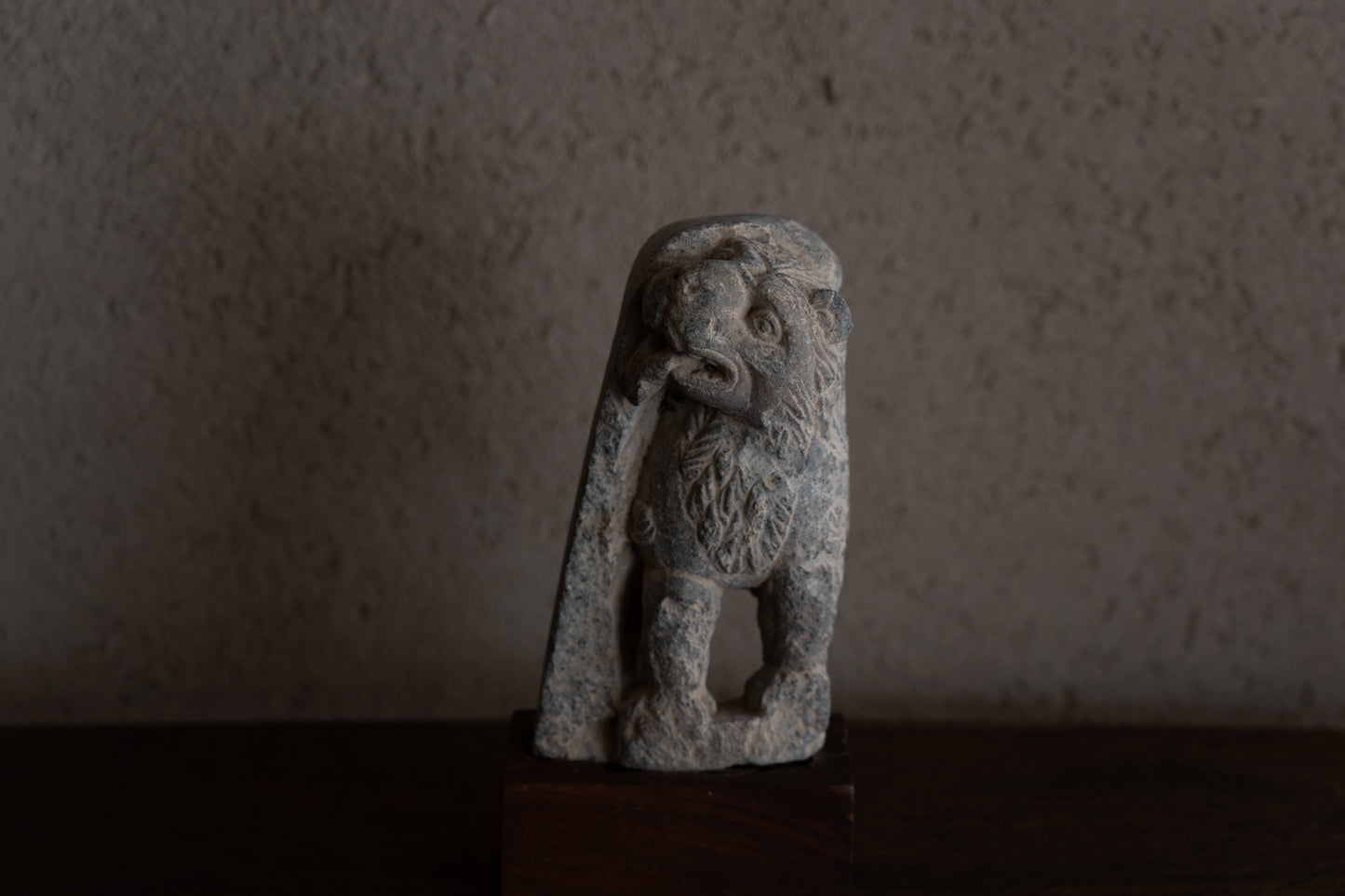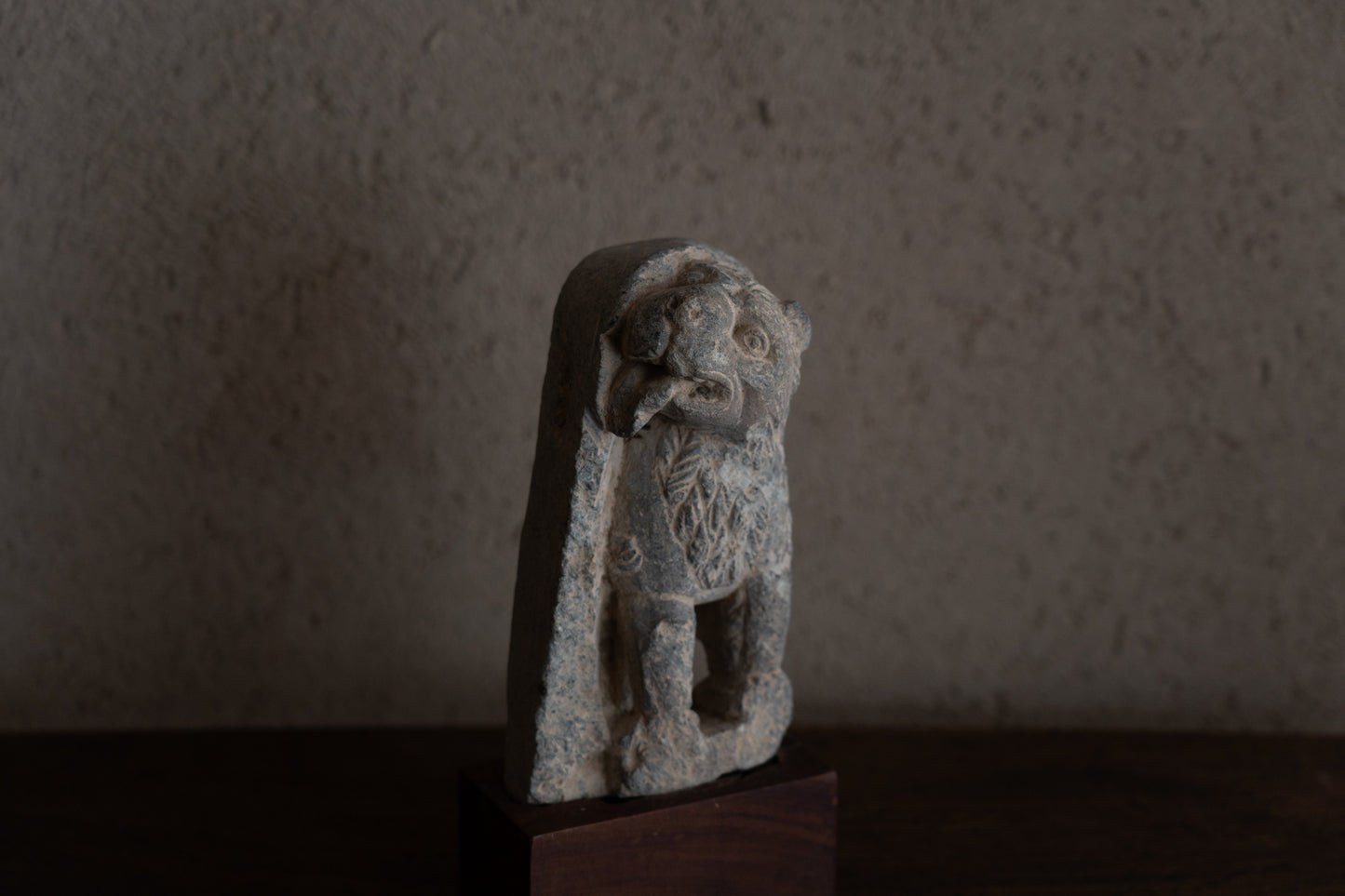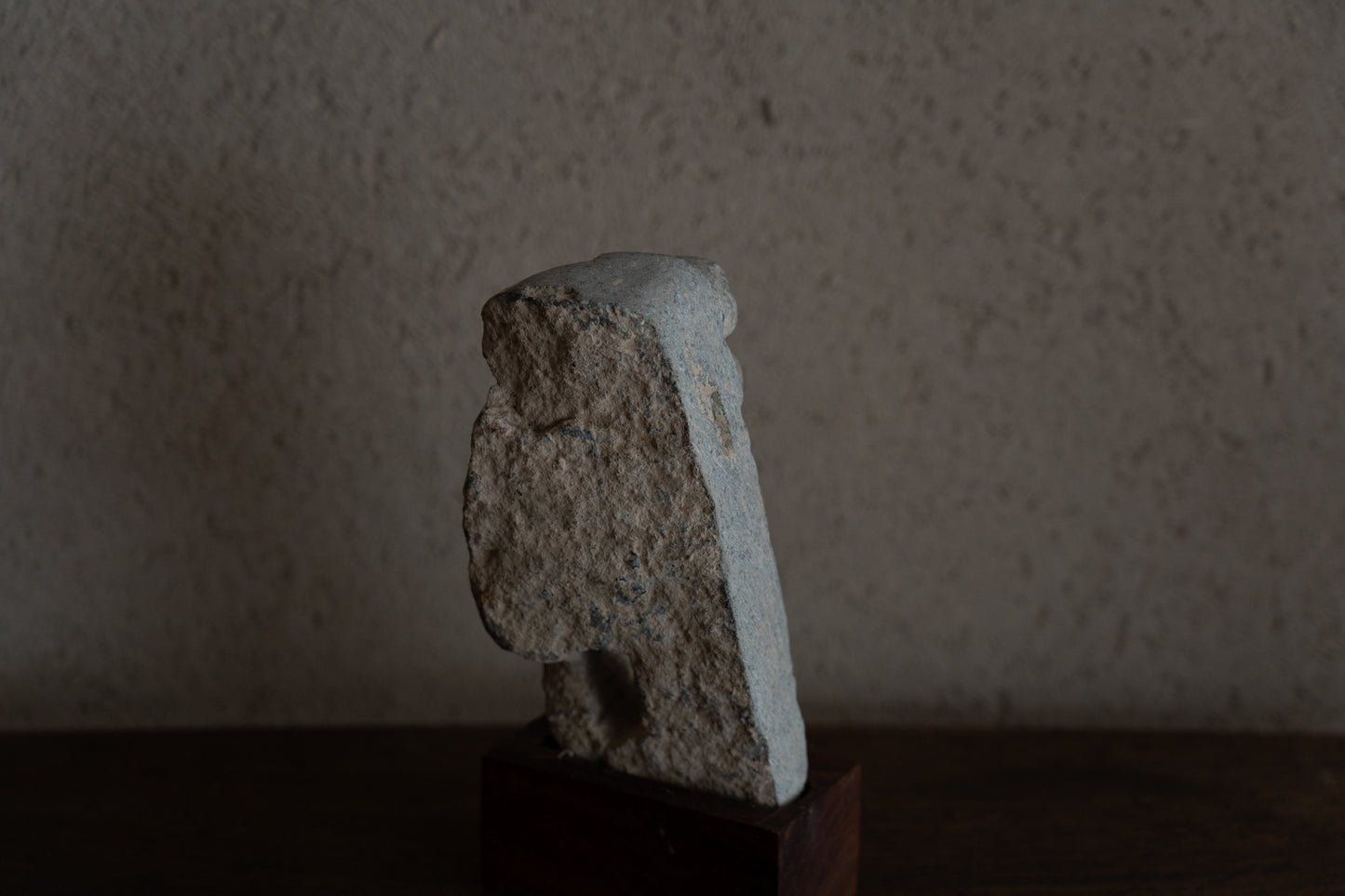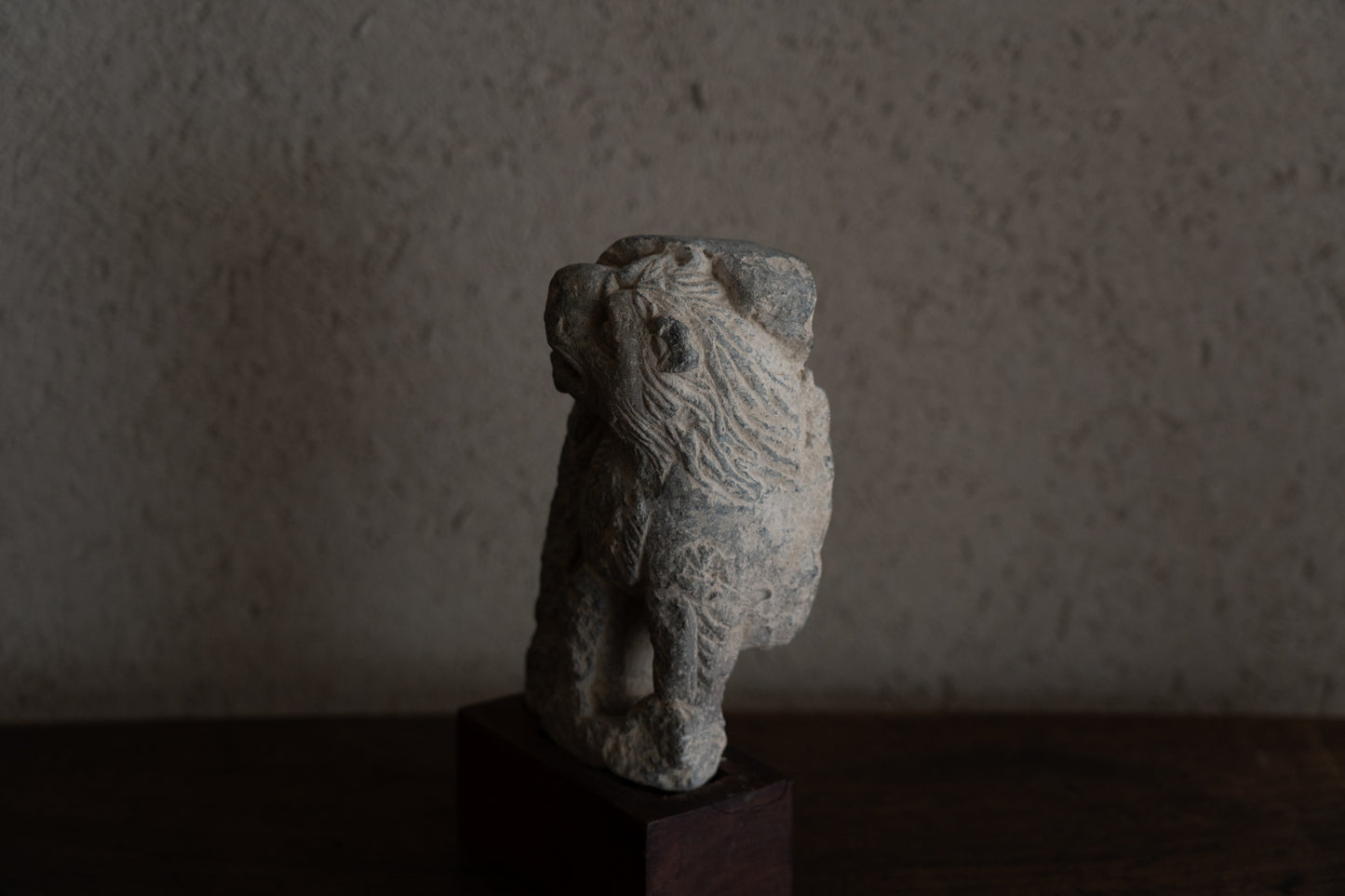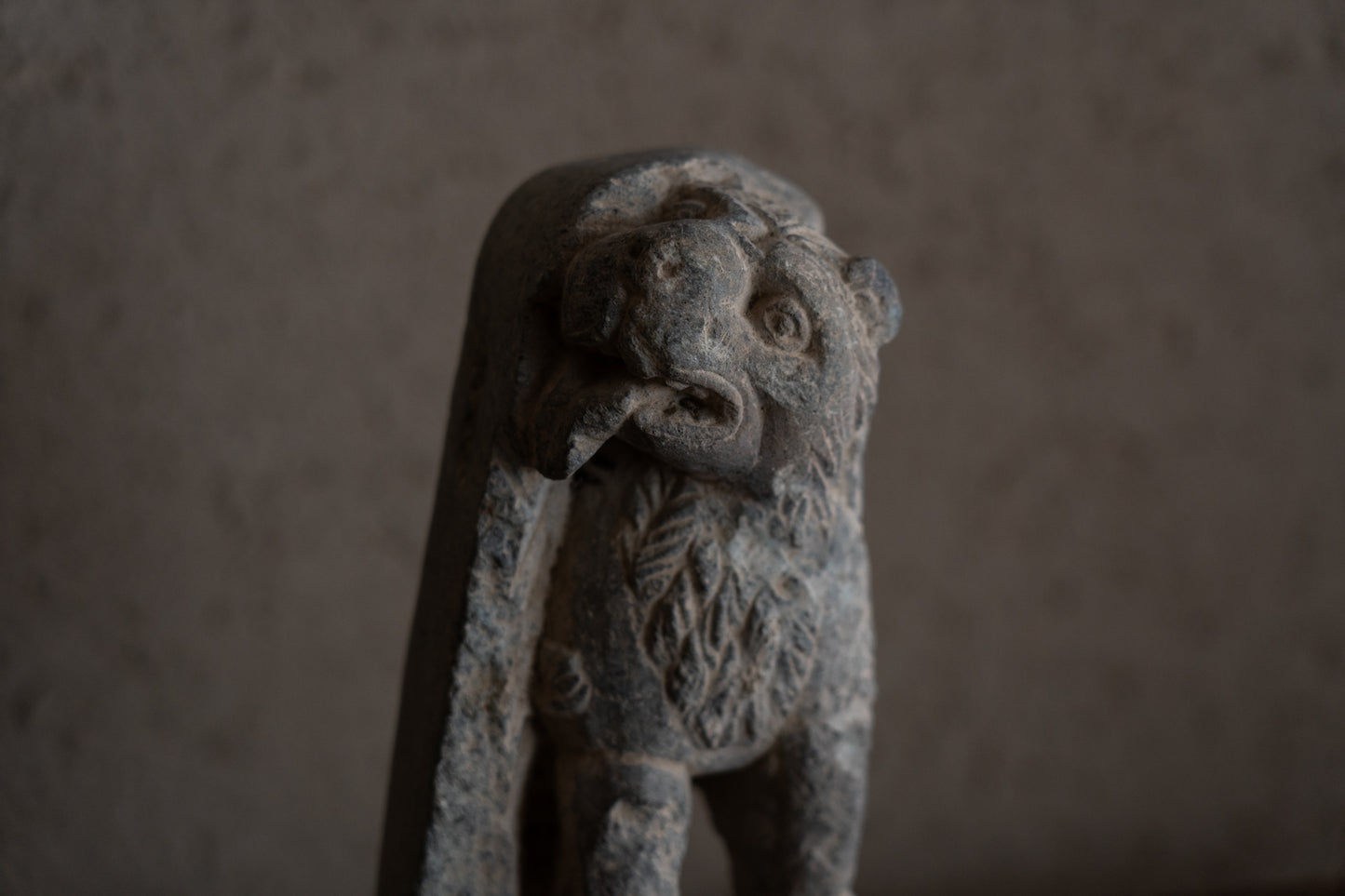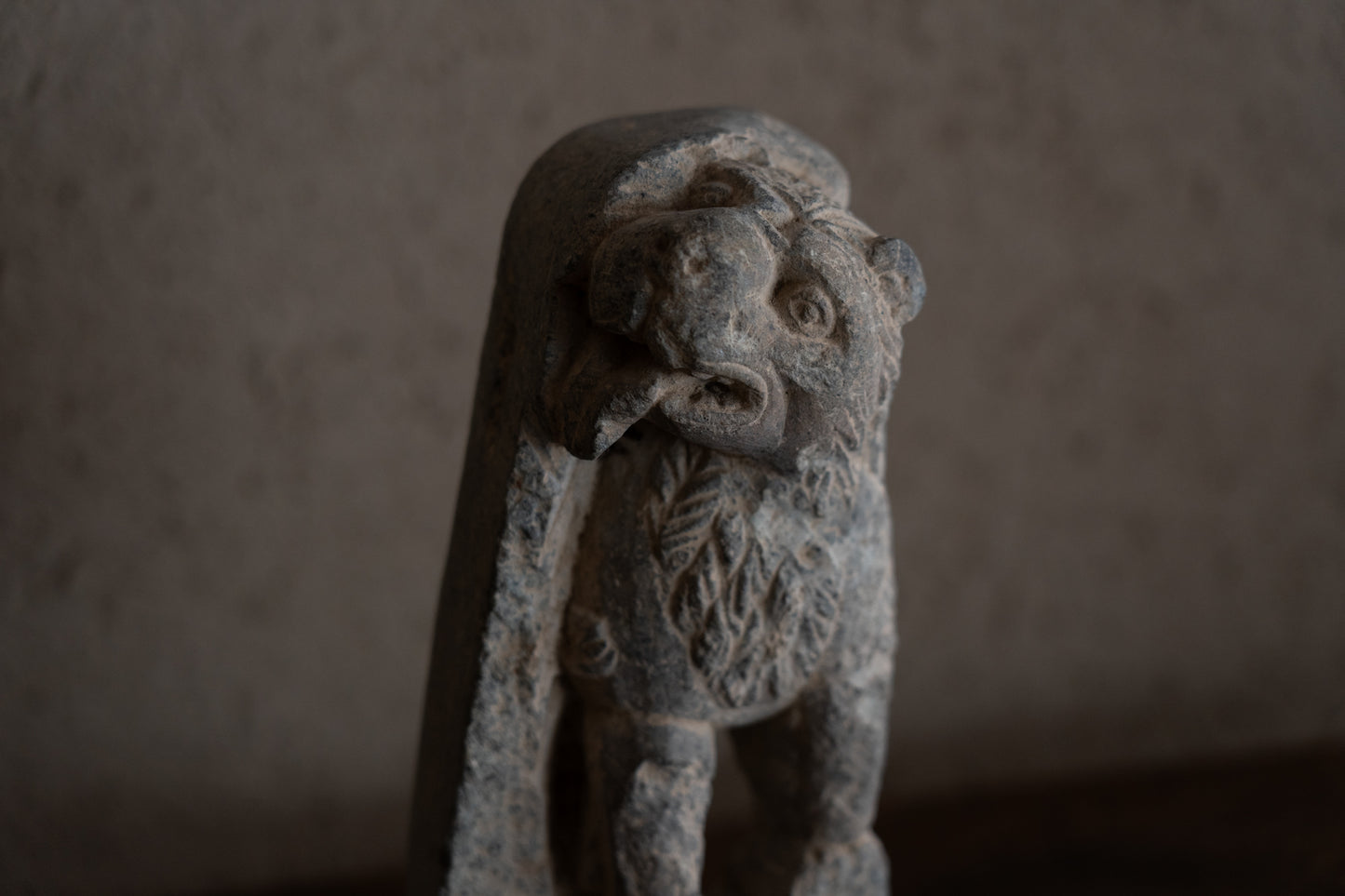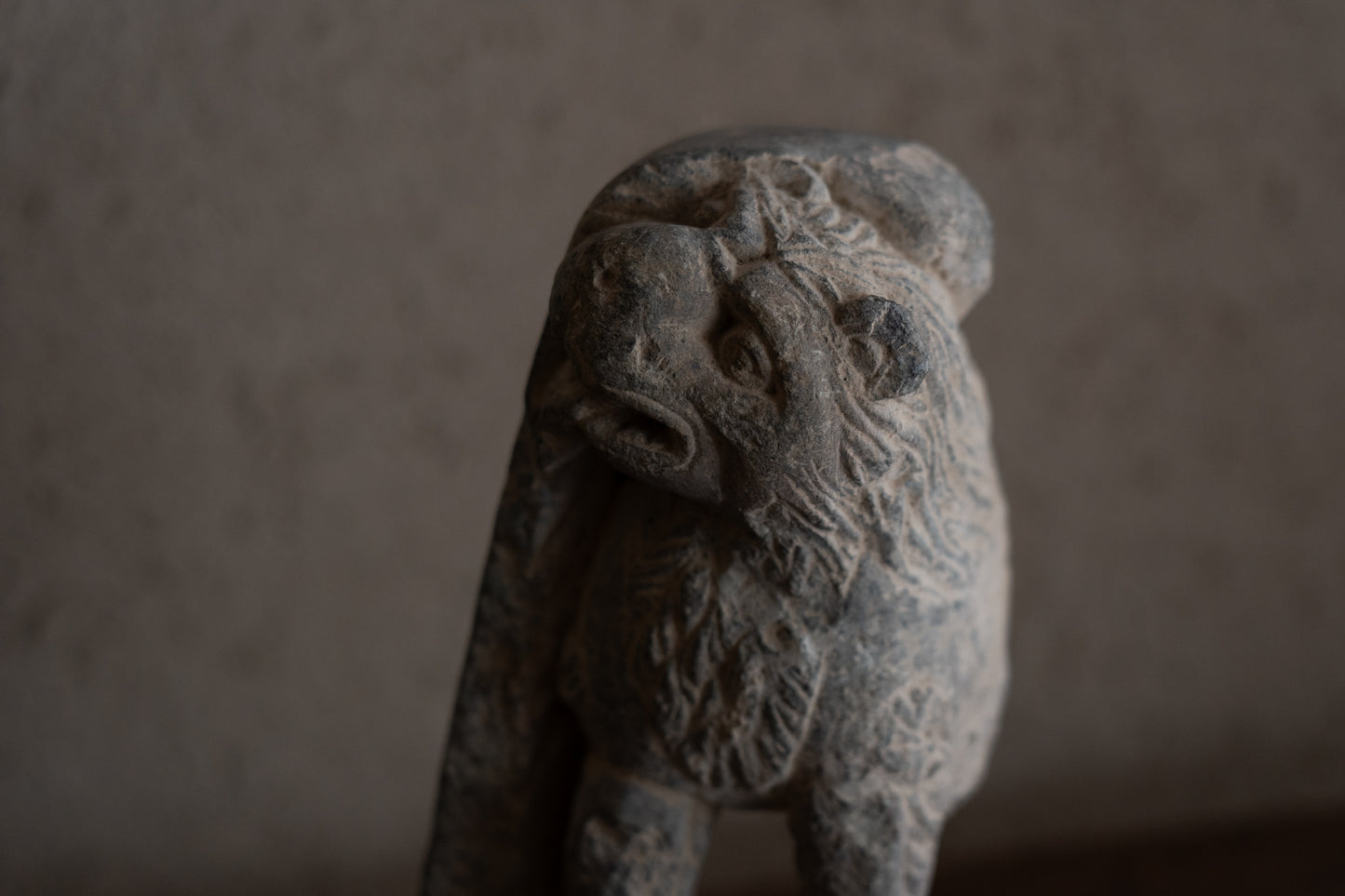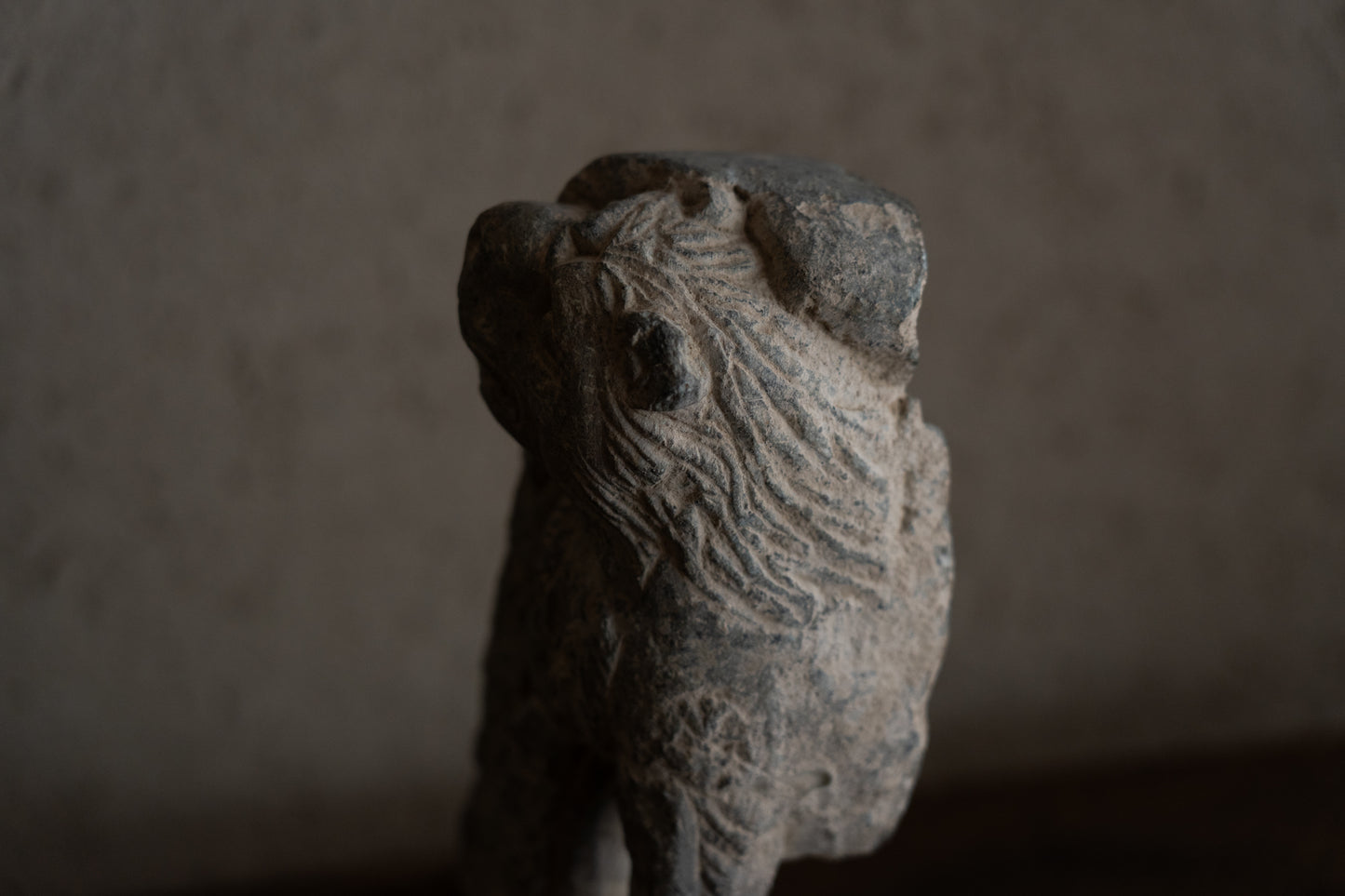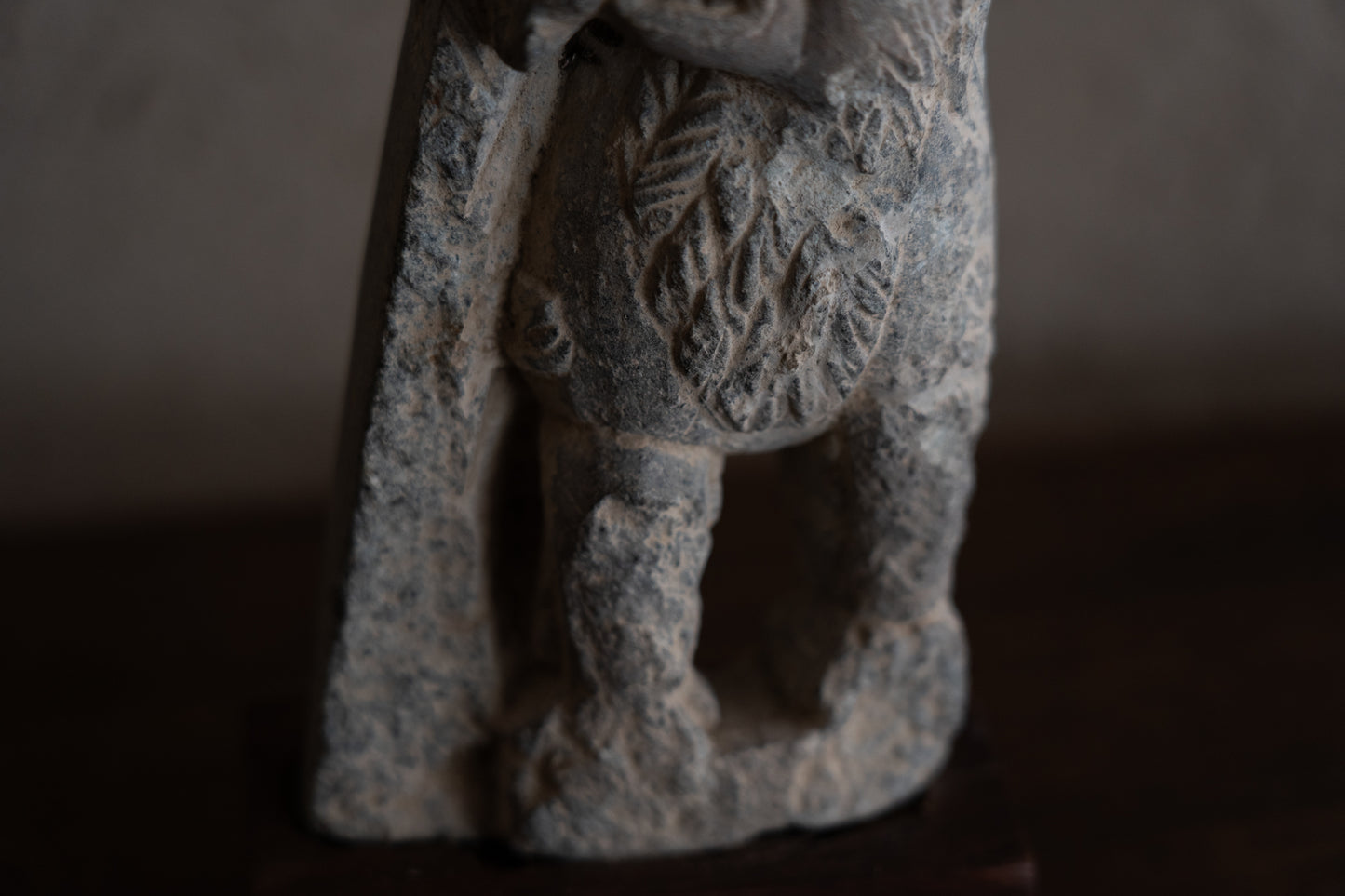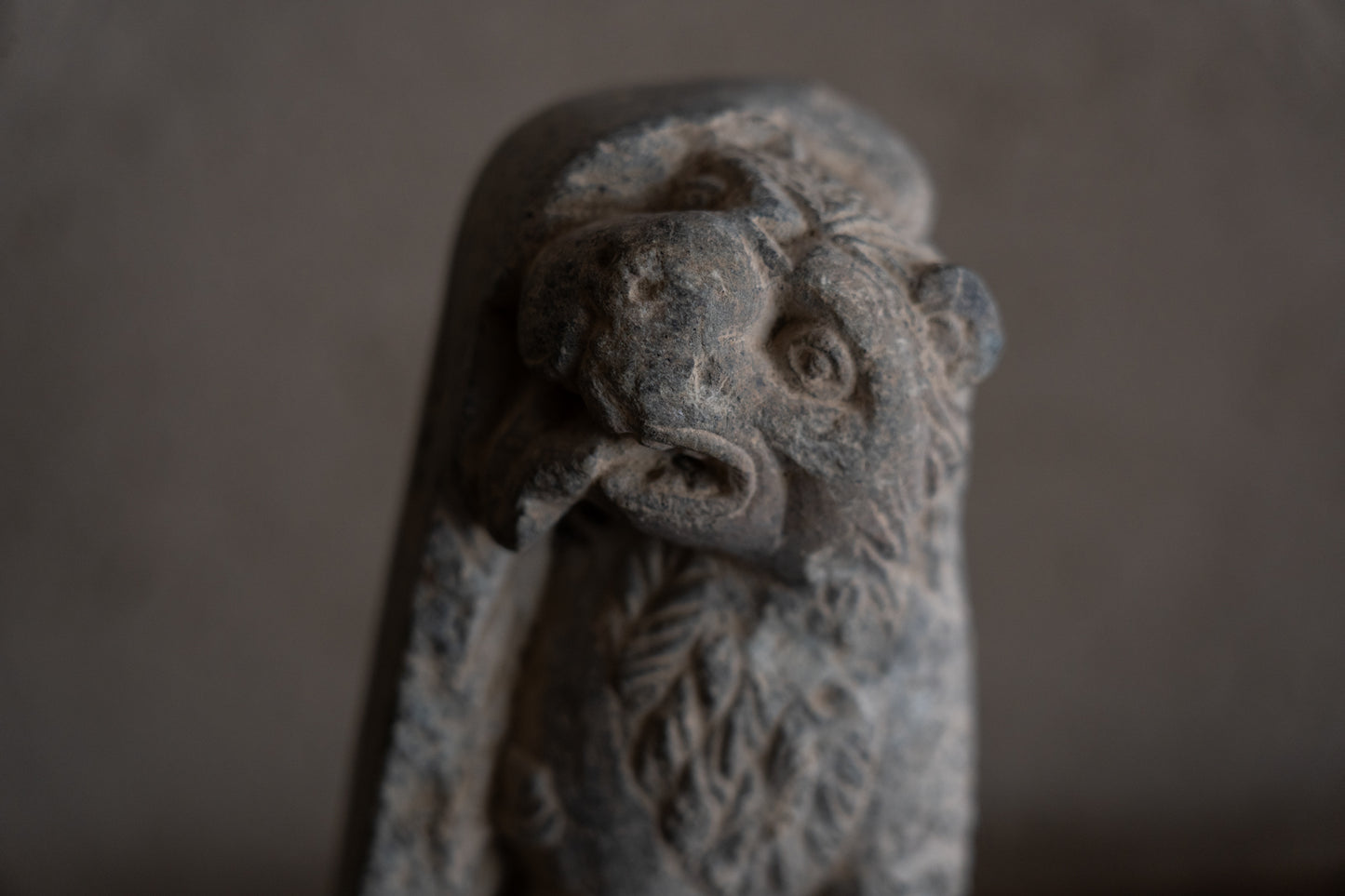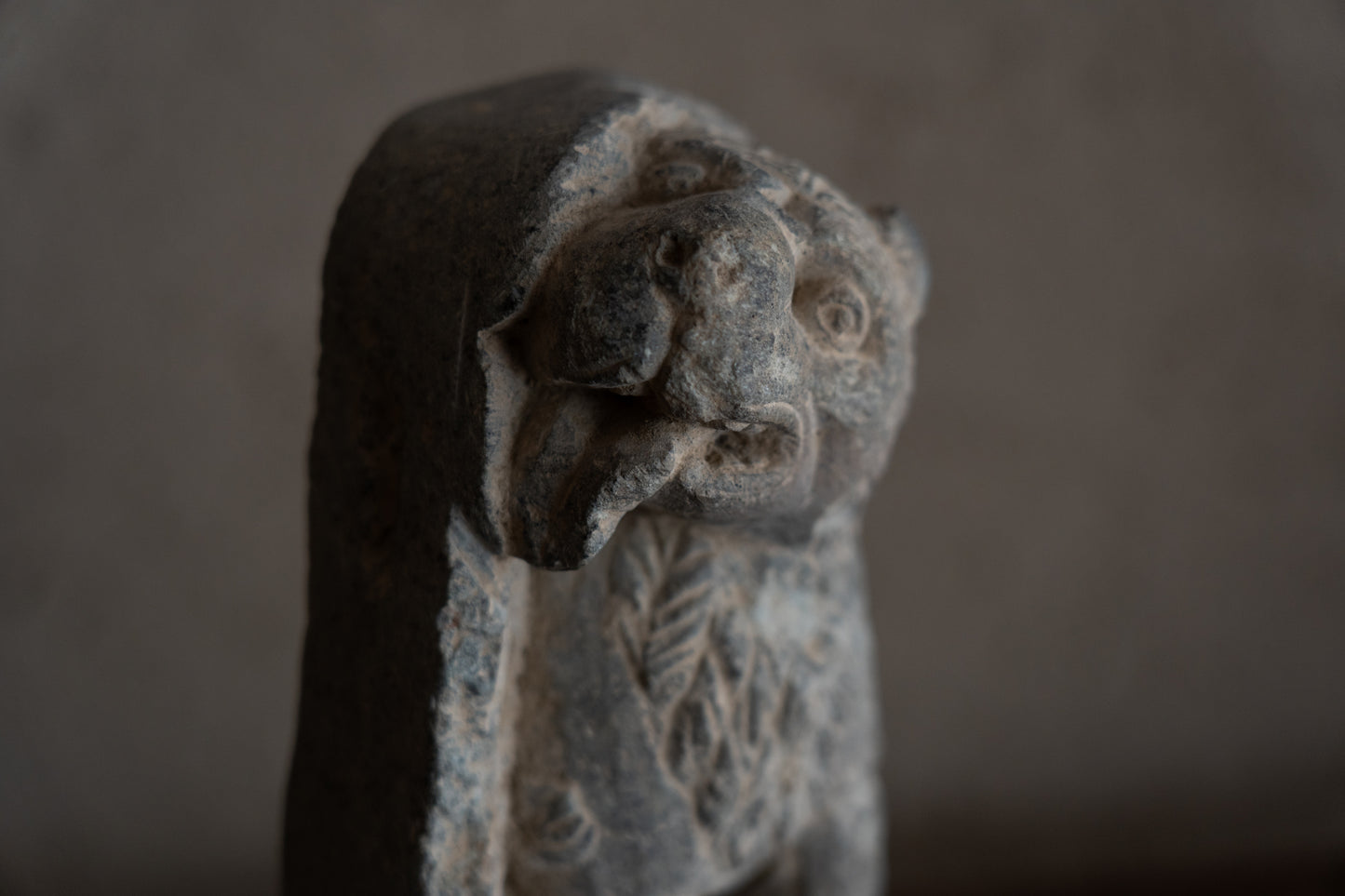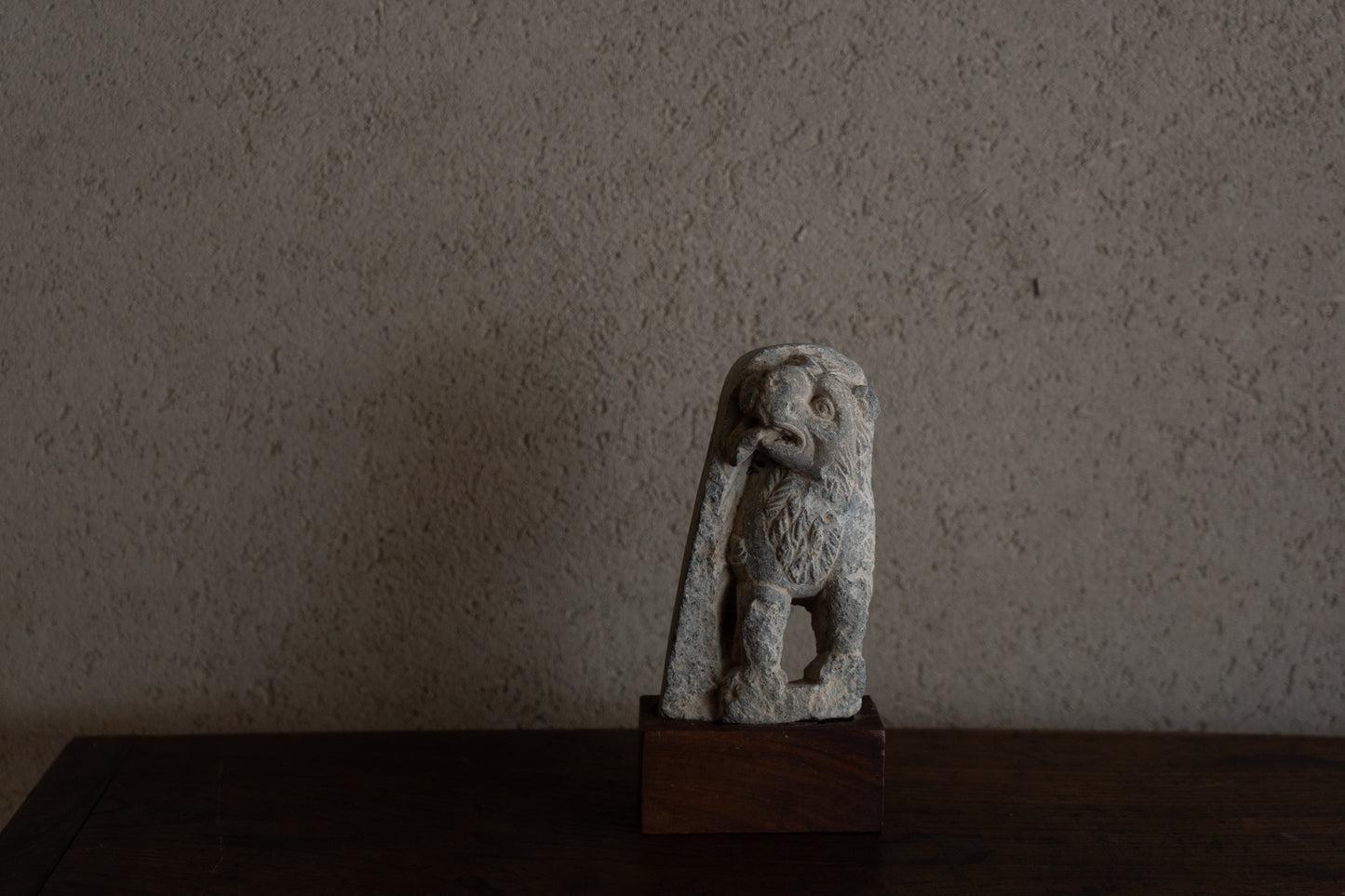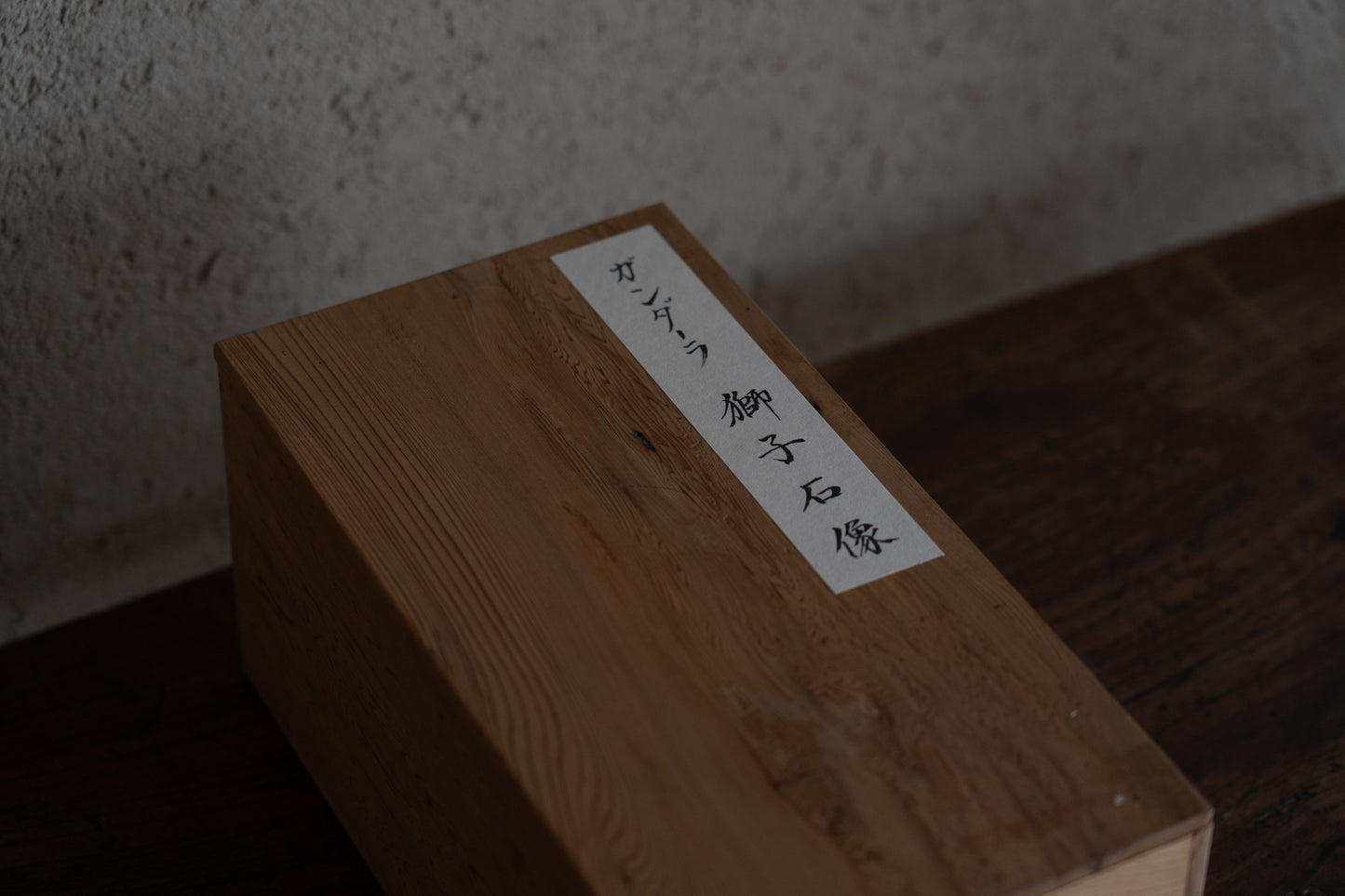Gandhara Lion Statue
- Region/Era Gandhara, 3rd–5th century
- Size H18.3cm x W10.4cm x D7.8cm
- Condition Good
- Accessory paulownia box
- No. 43nk-036
Gandhara is a transit point between East and West, connecting West Asia with India and Central Asia. Located in what is now northwestern Pakistan, it was here that the first stone carved Buddha statues were created around the 2nd century.
Buddhist sculpture, which developed in this area, a key location on the East-West border, combines elements from various regions, including Greece, Rome, and West Asia.

The lion design is one of these. In Western Asia, the lion was considered a symbol of power and the sun, but in Gandhara it became associated with Buddhism and was depicted as a guardian beast protecting Buddha.

Now, this work is a Gandhara lion statue. It is posing as if twisting its body while sticking out its tongue and looking to the upper right. It looks a little different from the original fierce appearance of a lion.
Although it is a lion, its fangs are not visible, and its round ears, drooping eyes, and pampering expression make it look just like a puppy. The only thing that makes it look like a lion is its lush, curly mane. Another characteristic of Gandharan lion statues is that, unlike Western Asian lions, which are depicted in a way that is close to the real thing, they are depicted in a way that is different from realism.


Surprisingly, there is a theory that this pose with the tongue out is a pose used when intimidating an opponent... but what do you think? There are several patterns for lion statues with their tongues out, but in the case of this statue, I can't help but think that it poses trust and submission rather than intimidation.

Seated Buddha, Gandhara, Kushan dynasty, 3rd-4th century
(Source: Hirayama Ikuo Silk Road Museum https://silkroad-museum-collection.jp/seated-buddha/ )
The above photo shows a seated Buddha statue (owned by the Hirayama Ikuo Silk Road Museum), known as one of the most beautiful Gandhara Buddhas in Japan.
Looking at both sides of the statue, we see lions that are very similar to the original statue. The pose and the diagonal pillar-like part on the left side, which is thought to be part of the folds of the pedestal, are also the same. This type of lion seat is typical of Gandhara. The style of showing the majesty of the Buddha, in which even the king of beasts bows down before him, can be seen in many Chinese stone Buddha statues.
This statue must have originally been part of one of these statues. What kind of beautiful Buddha was the lion looking up to?

Its universality connecting East and West, and its dynamic history as the prototype for lion statues in East Asia... there are many aspects that pique your curiosity, but aside from that, its greatest charm is its adorableness, which will bring a smile to your cheeks when you look at it.
To pick up and see the actual item in the gallery.
Reservation